Imperial War Museum

By Robert Kelly
Visit IWM London – Plan Your Visit | Imperial War Museums
I’ve left the granddaddy of all London museums to the end, the Imperial War Museum (IWM)London. There are actually five Imperial War Museums. This one in London, HMS Belfast and the Churchill War Rooms also in London, Duxford for all things aircraft and IWM North in Manchester.
The museum is located on the south bank of the Thames within walking distance of Waterloo and Elephant and Castle Stations. It does not take long to get to the museum via public transportation from anywhere in London. I actually got off the tube at Lambeth North Station (the closest to the museum) and walked the last seven minutes of the journey through a quiet neighbourhood to the museum.
Admission is free to the museum, though they do recommend making a reservation so that you don’t have to wait during busy times. I didn’t have a reservation, but was able to get in right away. There is a brief security check as with many museums in London. I definitely didn’t have the museum all to myself, but it wasn’t overly crowded the day I visited.
This shows the different areas of the museum. I didn’t go to the Holocausts area, but I did have a brief look at the role played of the late Queen Elizabeth during World War 2.
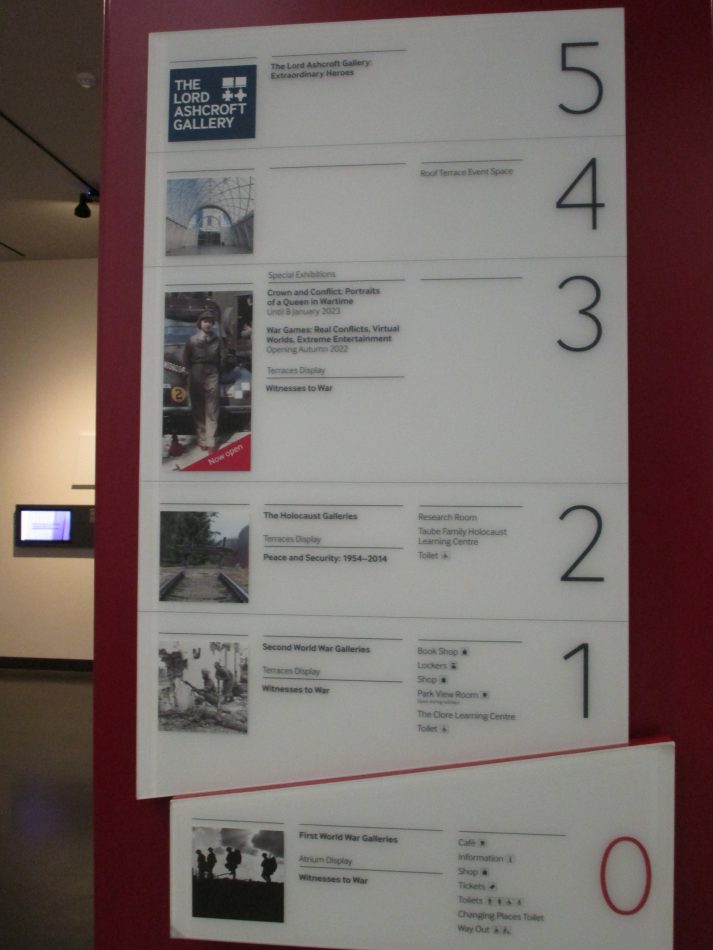
I will start with the First World War. Many museums have recreations of WW1 trenches and the one here is very well done. Unfortunately, its very dark and I was unable to take any photos. I did find this video on YouTube that does a good job of capturing the trench. https://youtu.be/hqTCCW-RyA8
Here are the usual uniform displays.
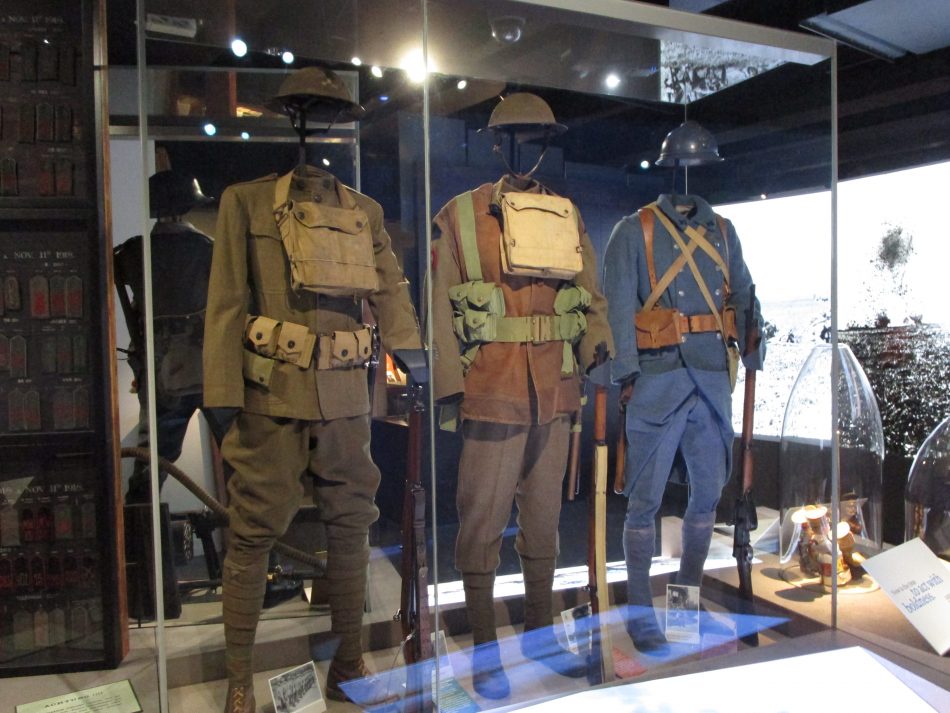
And some early war representations.

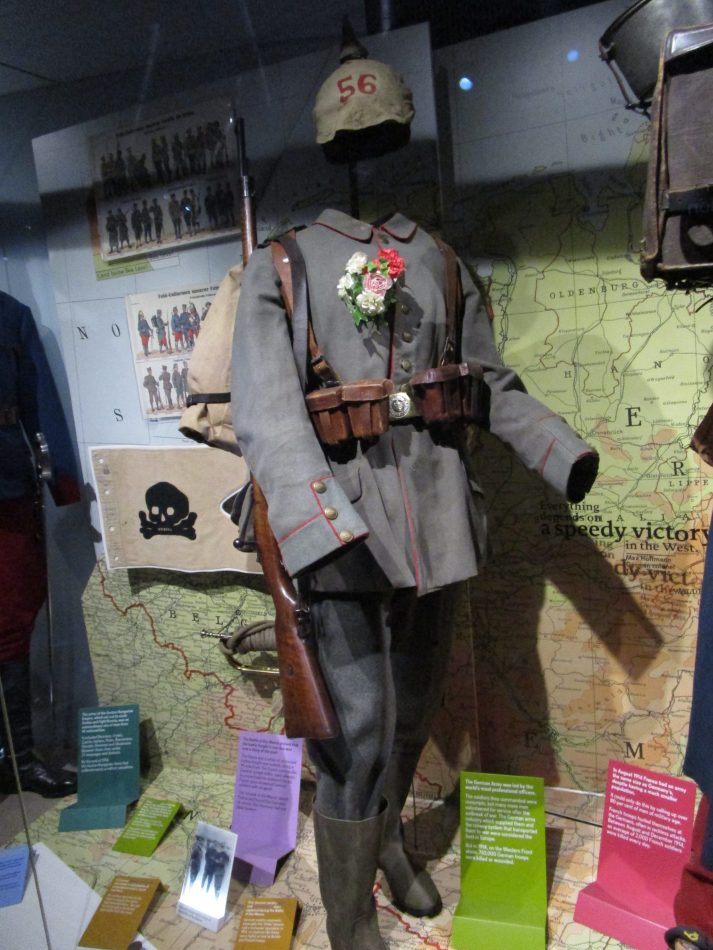
Here is one of the famous French 75mm guns.
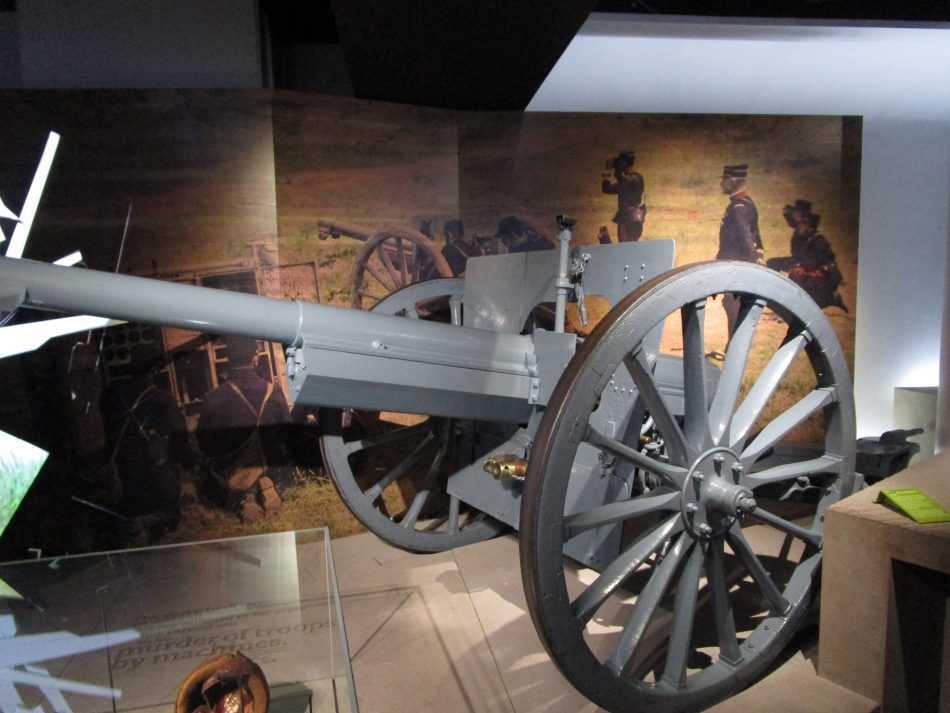
And a rather frightening looking sniper.
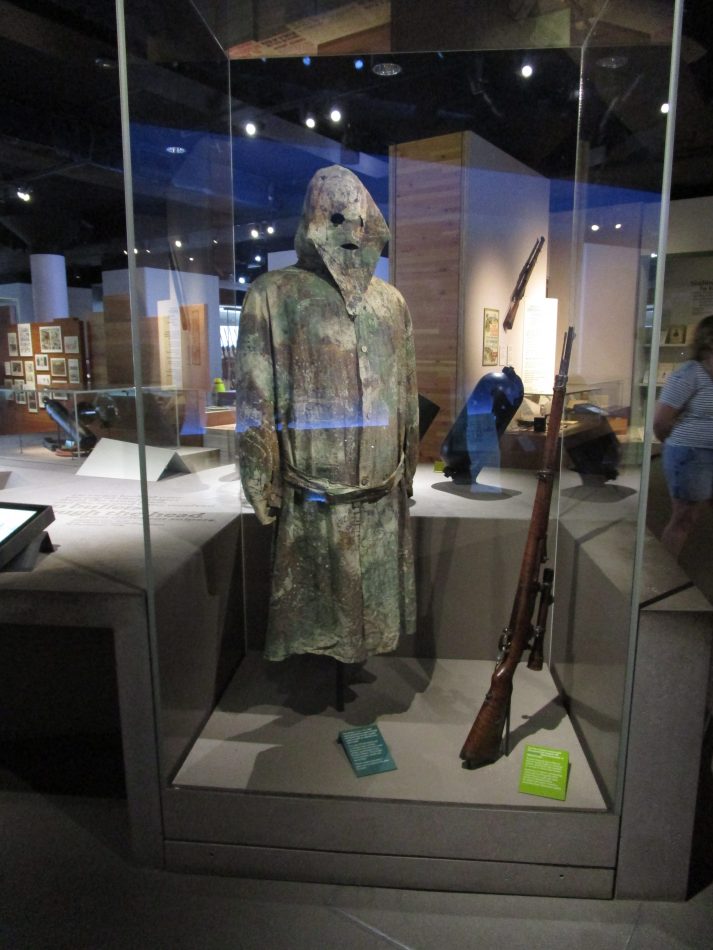
Some attempts at body armour and periscopes for the trenches.
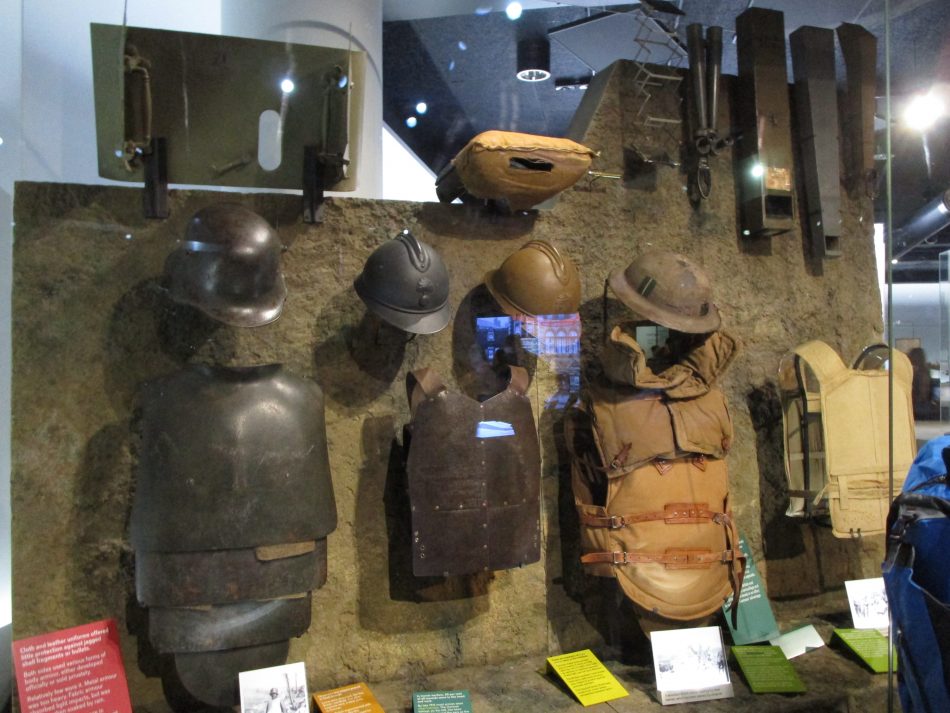
A child’s game of trench football.
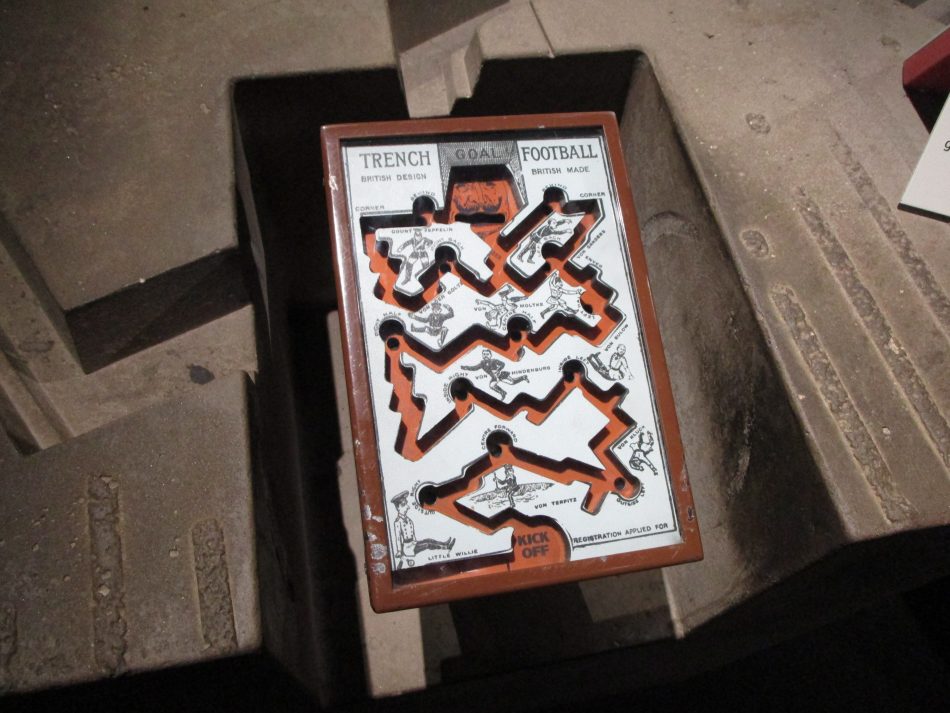
British museums are very good at hanging airplanes from the ceilings.
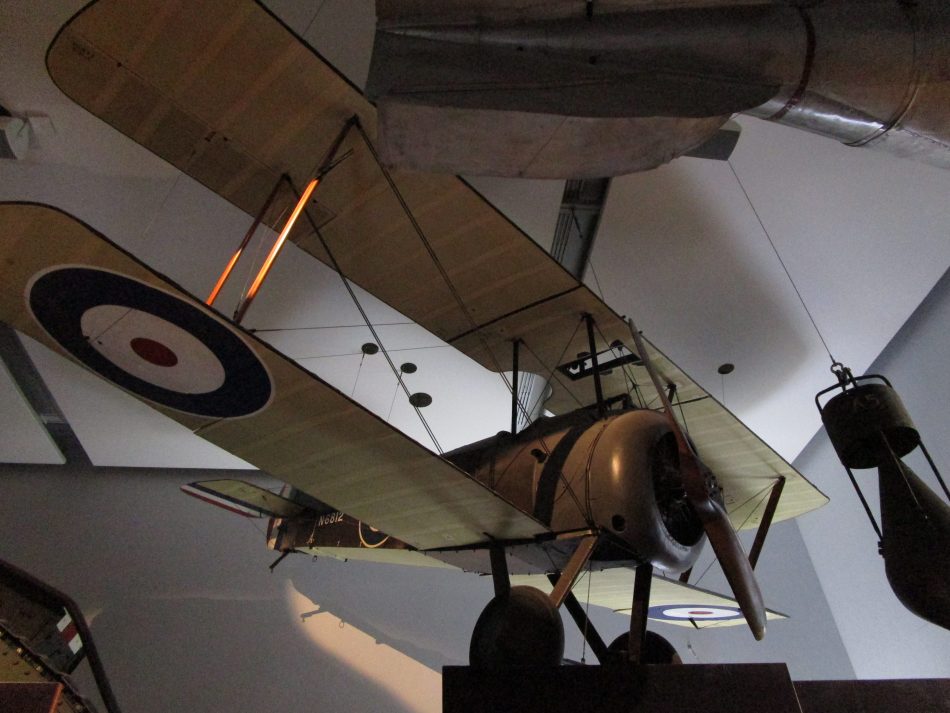
Again, one of my favourite subjects, army field rations.
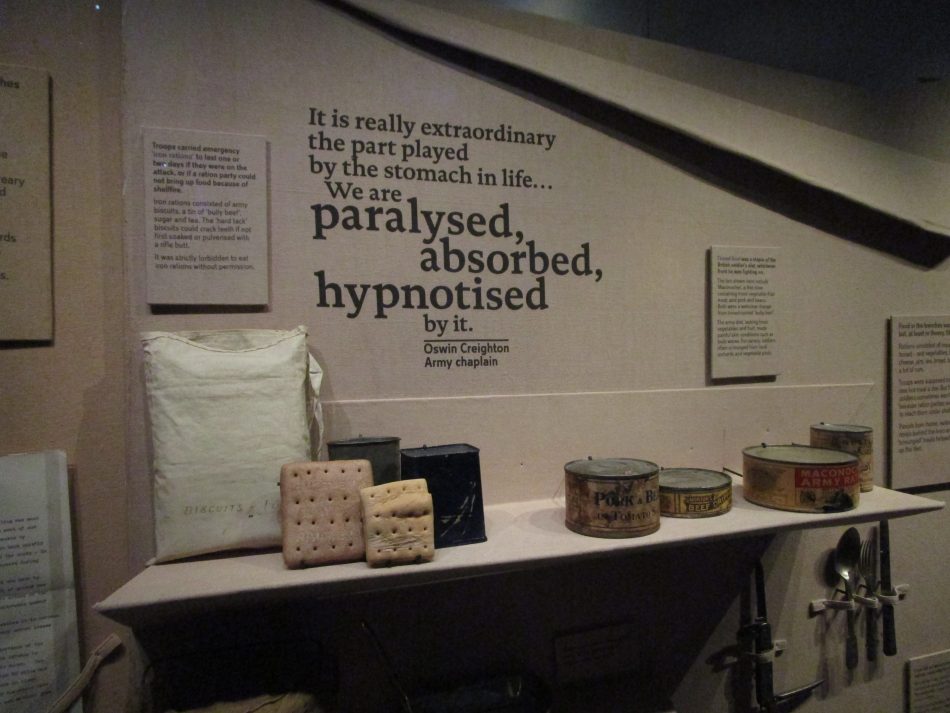
They had a tank on display and I did my best (and failed) to capture it with my camera.
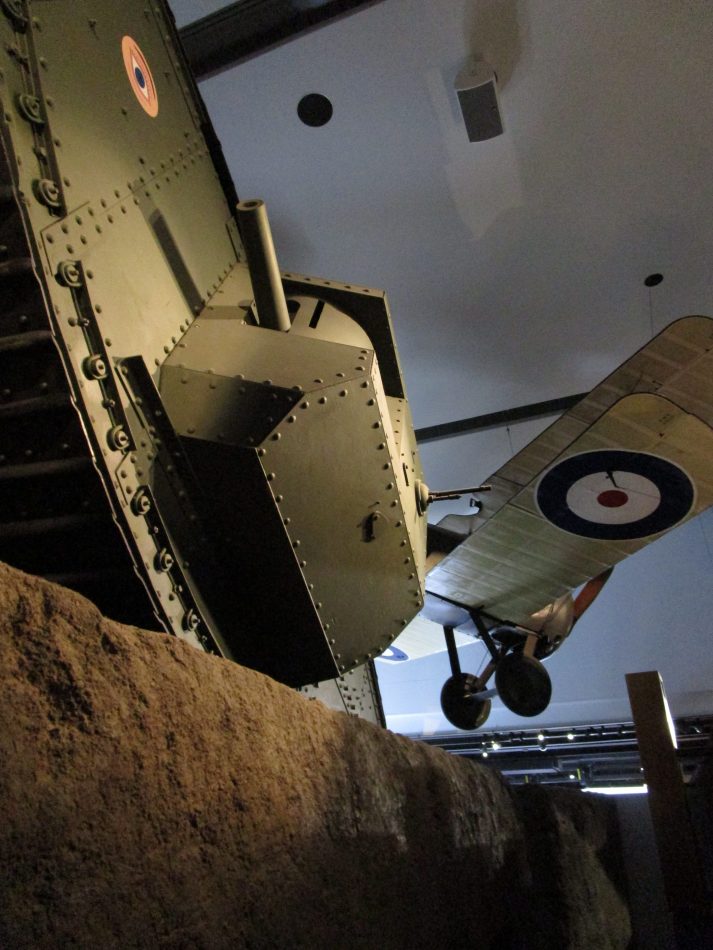
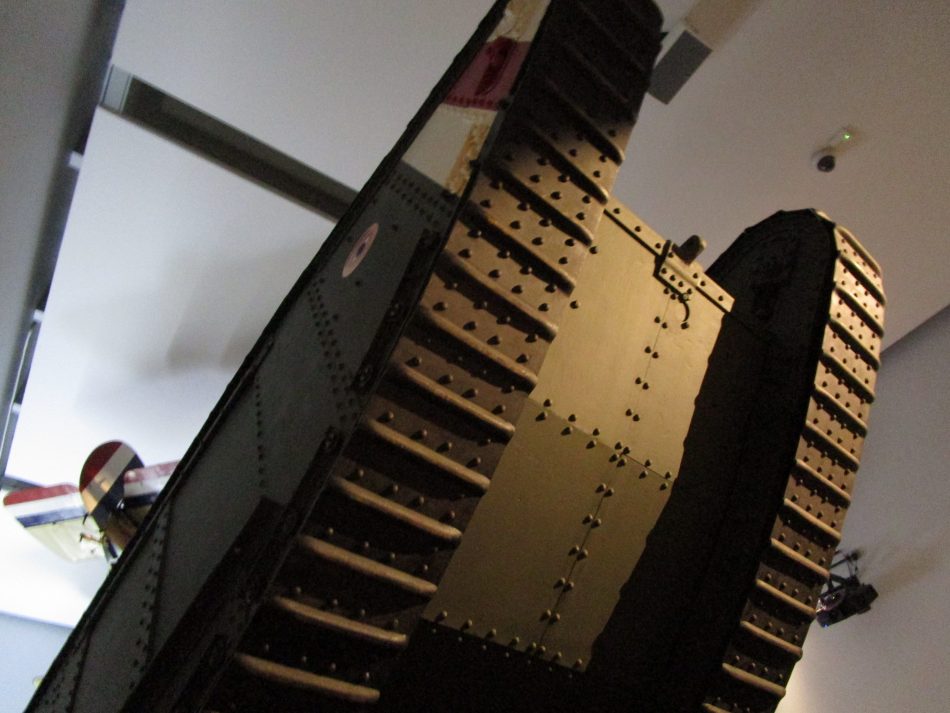
An excellent collection of ships displaying “dazzle” camouflage.

World War 2
Here is the remains of a vehicle from the Western Desert.
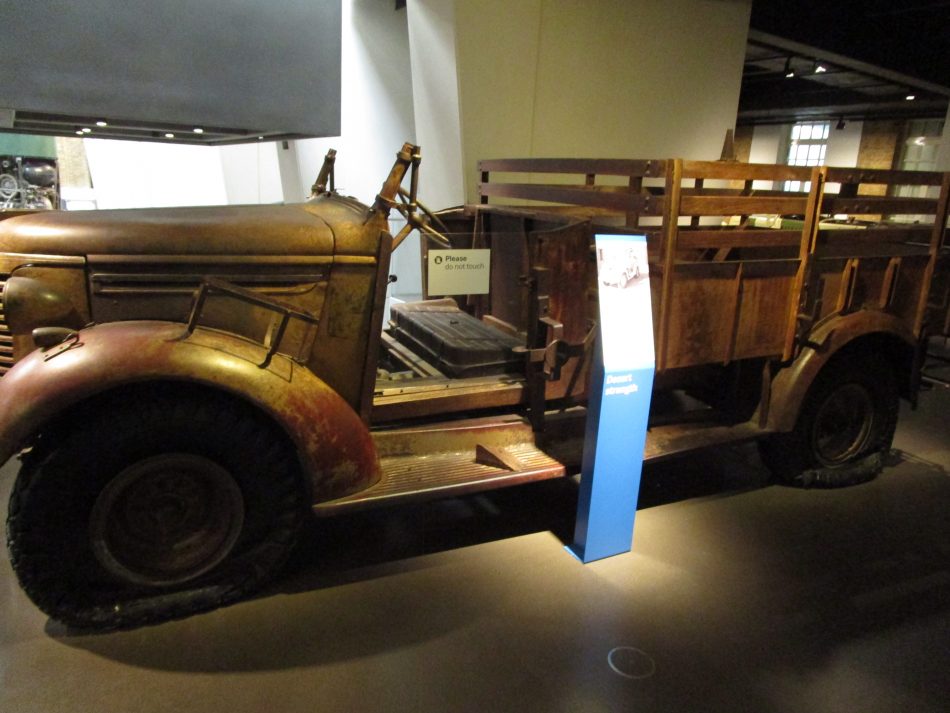
WW2 bombers look massive, but the actual flying and fighting compartments are quite small, which is why it was able to fit in the museum.
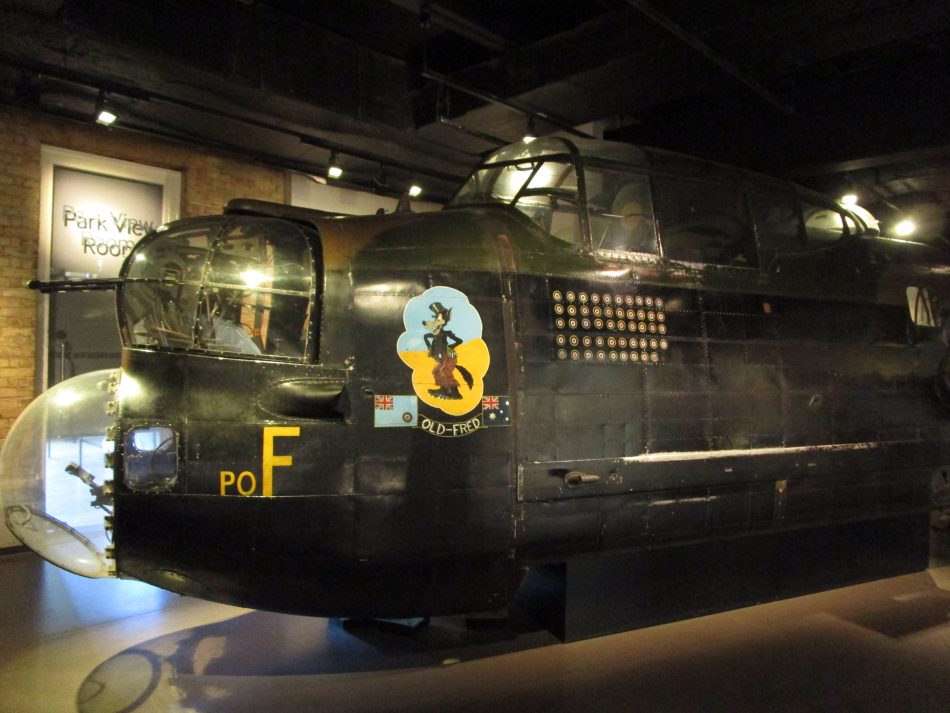
Dennis “Matt Varnish” Campbell and I find this story of Monty’s Humber interesting. We might be the only ones.
When is was in grade seven (in the early 70’s) there was a plastic model contest at our school. It was sponsored by the local hobby shop in Ottawa, Canada, Hobby House, which is still in business today. They provided the prize for the best model. It would have been nice had they ponied up a Tiger tank kit or something equally cool, but no, the prize was a dusty 1/32 scale Airfix kit of Monty’s Humber.
I don’t now why, but I even remember that the winner was a grade eight modelling wizkid called Reg Fendick. I still have no idea why that kit sticks in my brain, but I go to London and I bump into the actual Monty’s Humber.
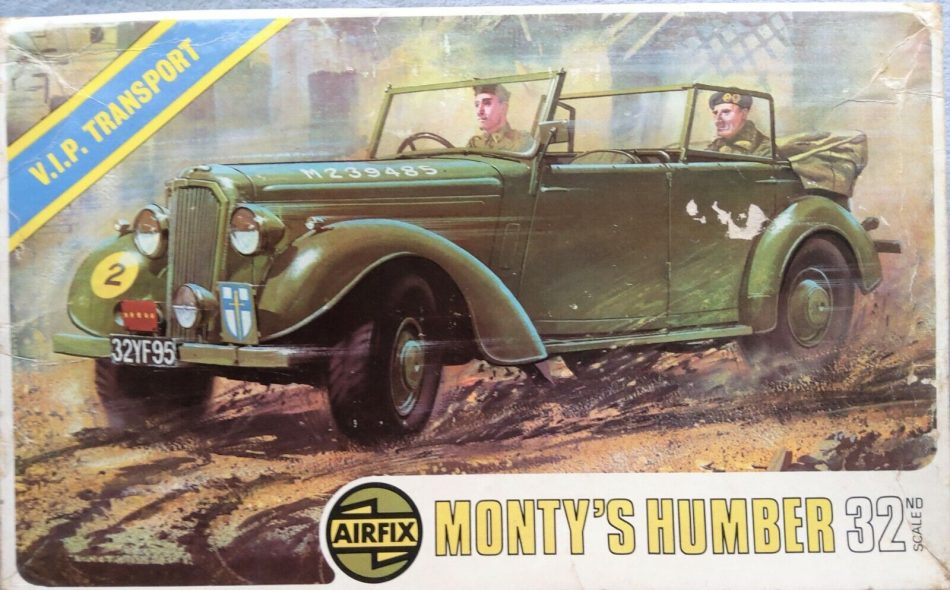
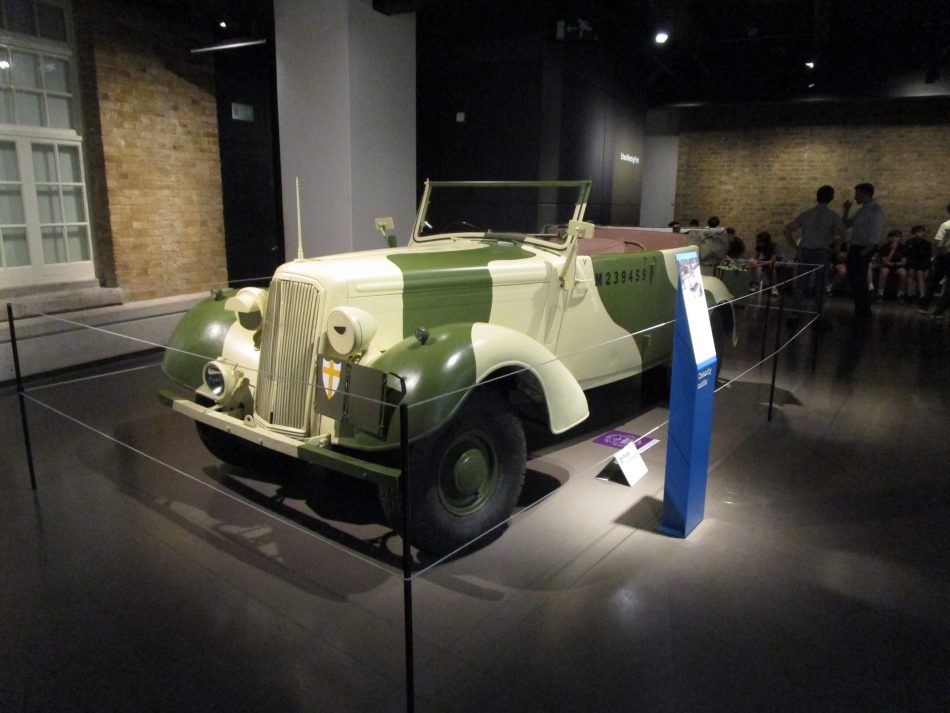
A very nice example of a Sherman V tank as used by the British.

This is part of a display of the home front during the war. There house was no longer inhabitable and they moved in with neighbours.
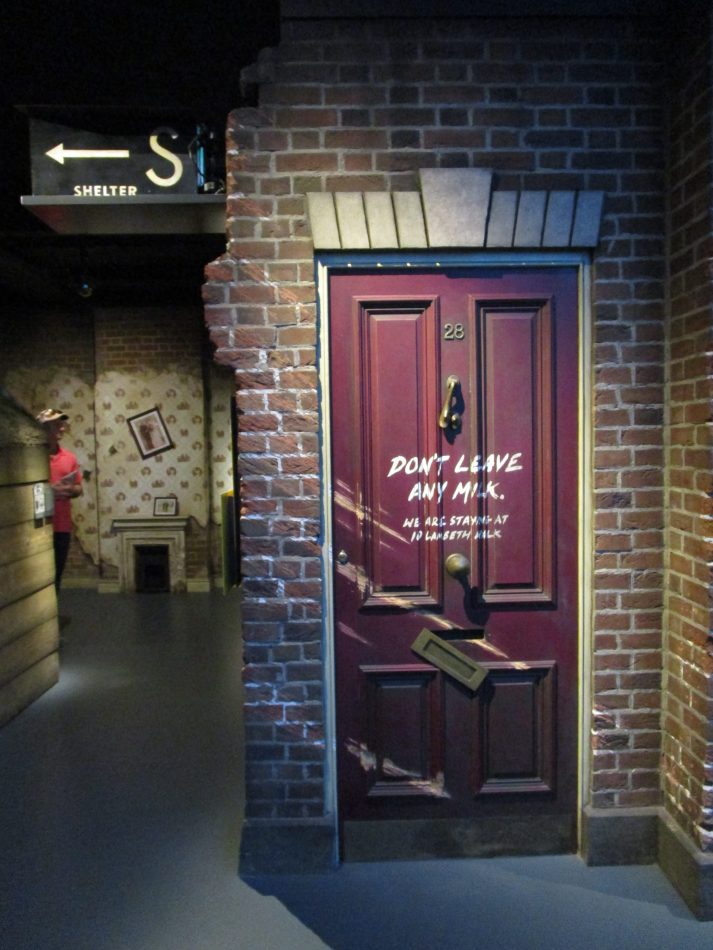
The Italians in the desert.
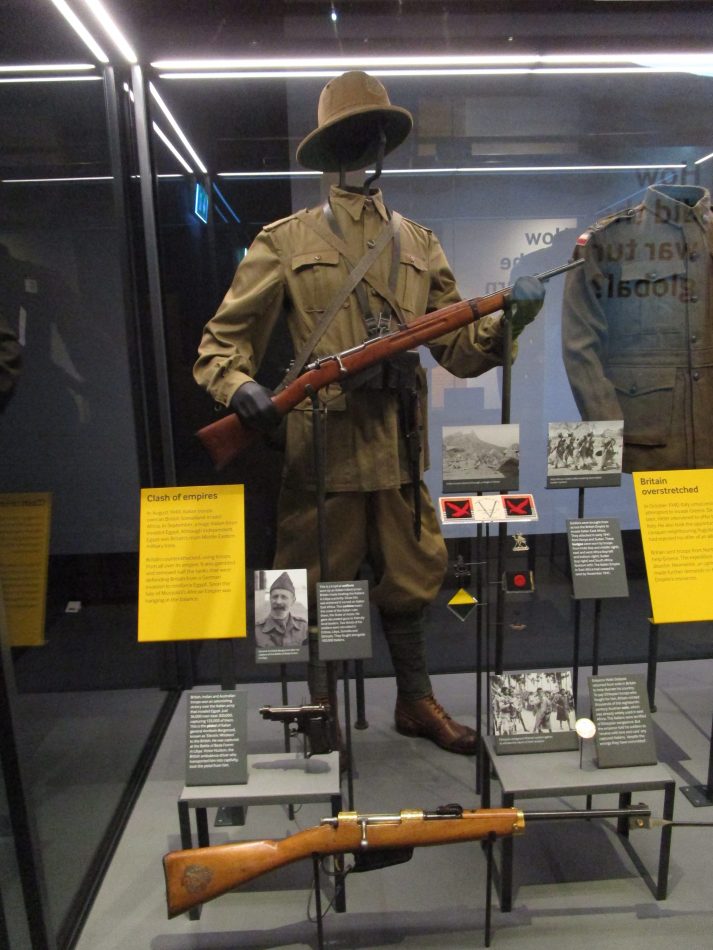
When I was a young soldier the old vets would drop by on special occasions. We would show them our 105mm howitzers (the same design that the Americans used in WW2), but all they wanted to talk about was how they operated the venerable 25 pounder.
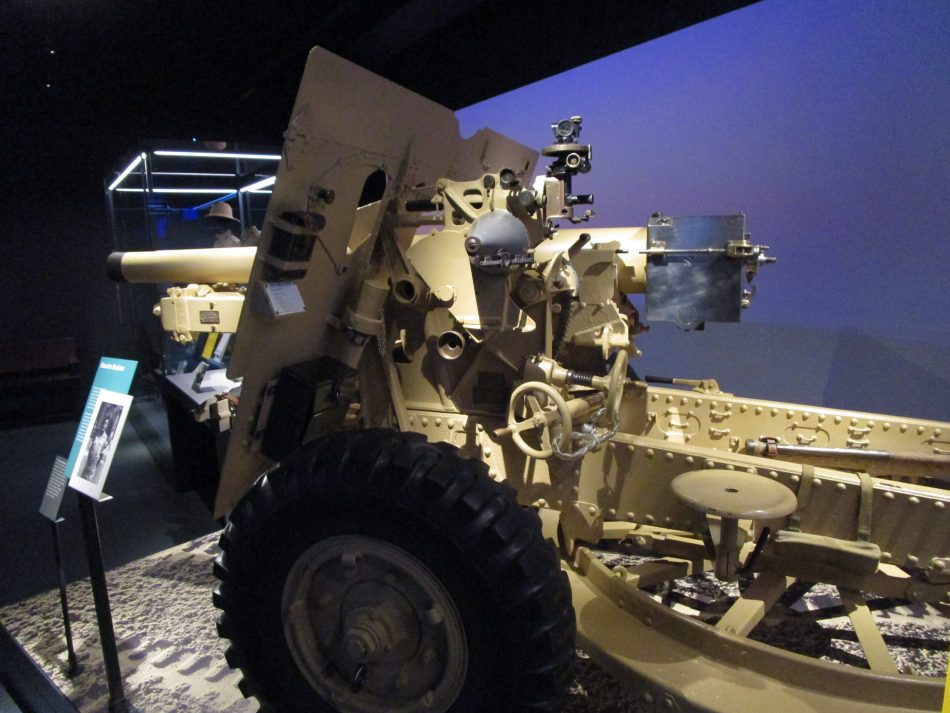
The British in the desert.
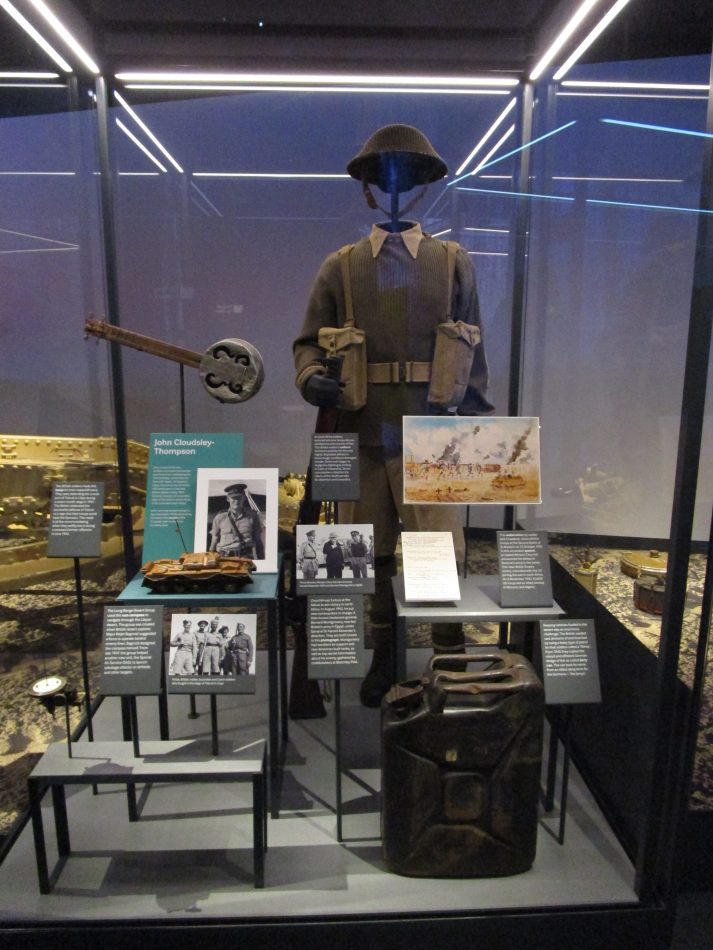
German and Axis uniforms.
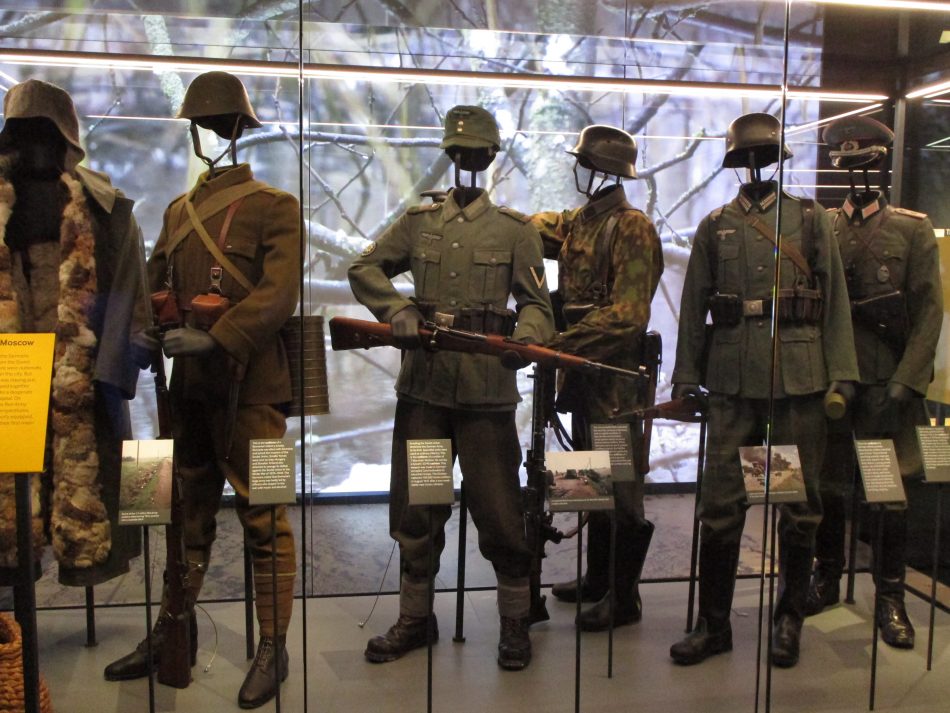
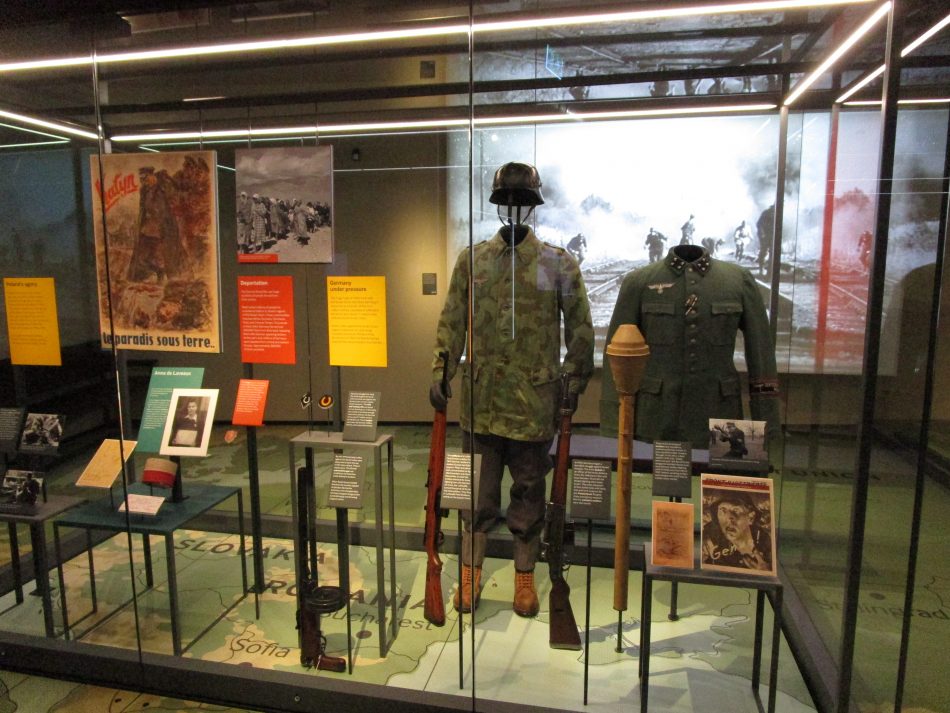
The Soviet display.
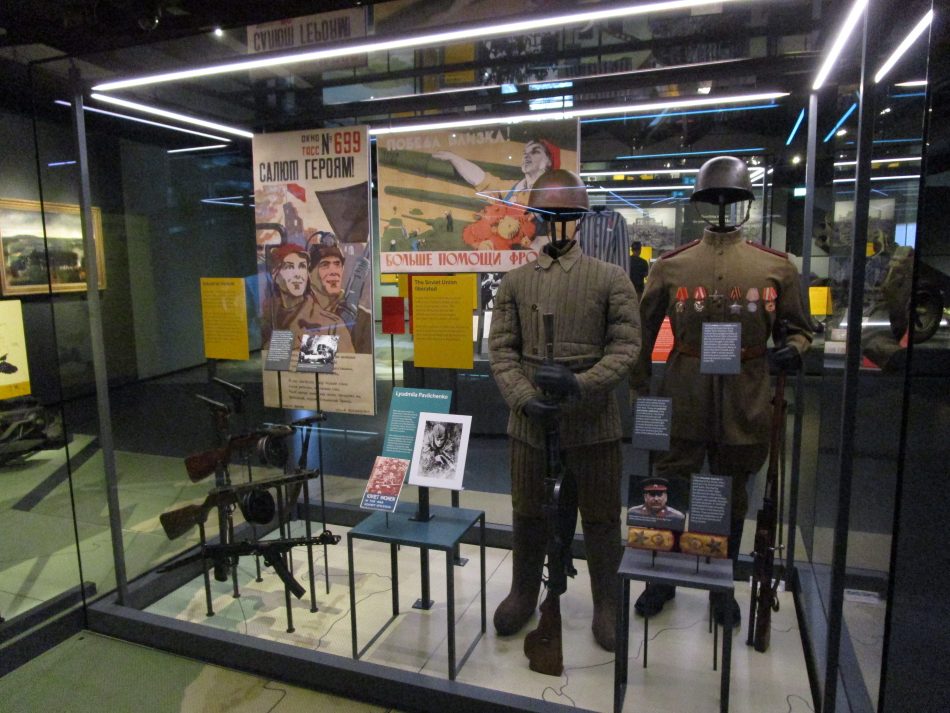
The tail of this German fighter plane shows that it destroyed 121 British bombers.
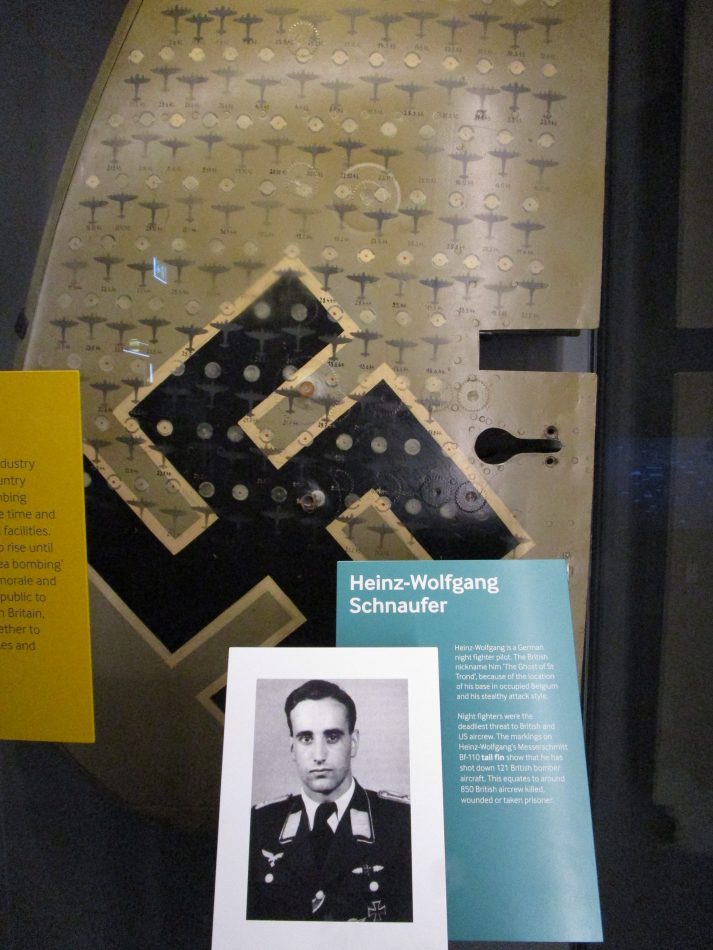
Some very nice ship models from the Battle of the Atlantic area.
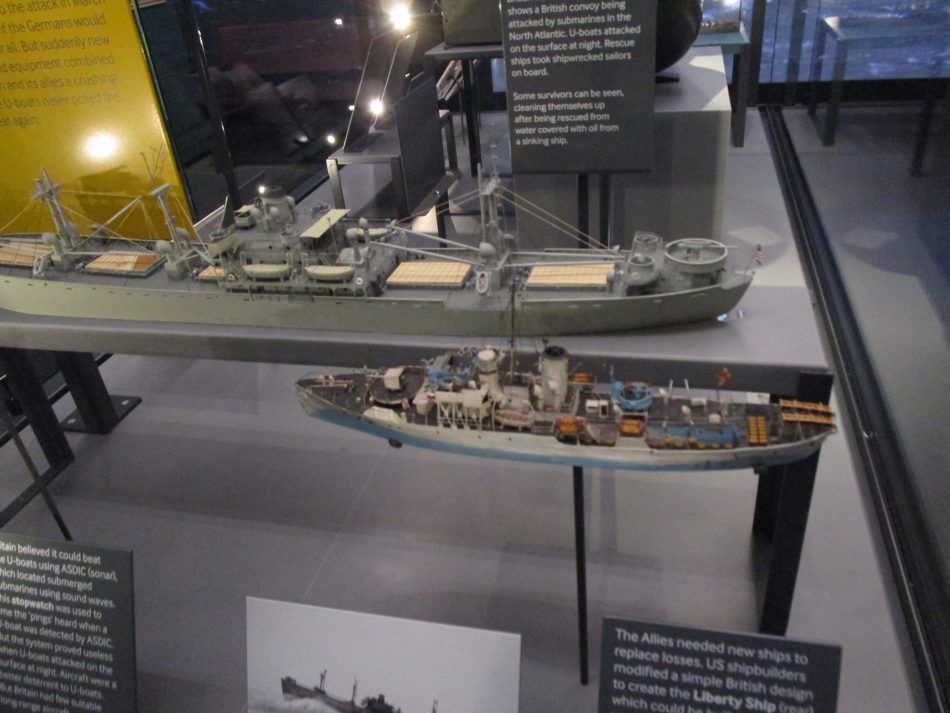
This sobering display graphically shows allied shipping losses in during the Battle of the Atlantic. Each model ship represents five ships that were either sunk or damaged by German U-Boats.
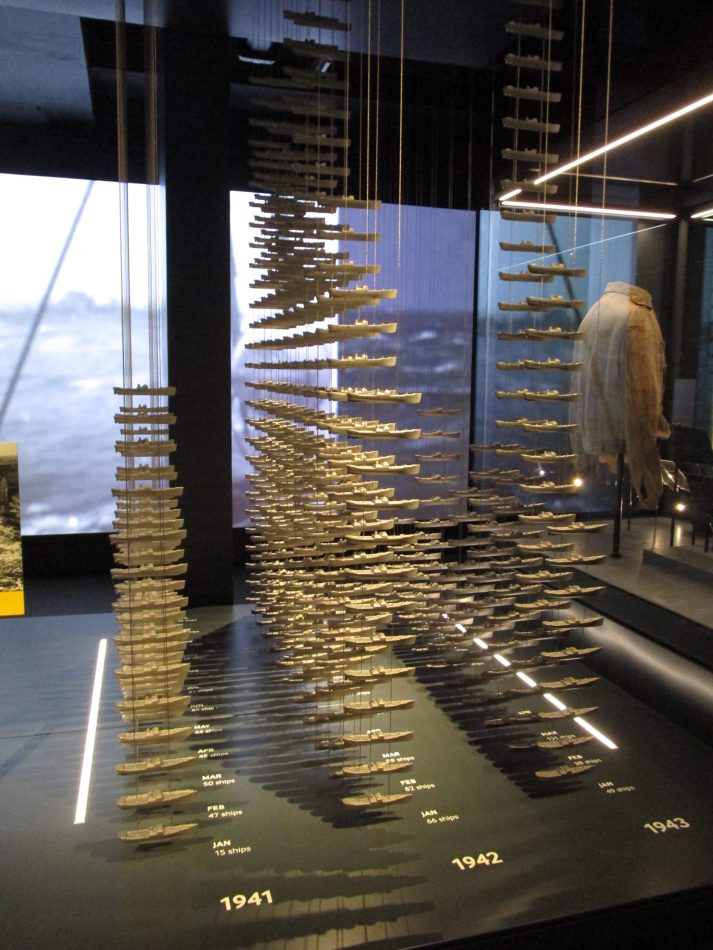
A display of lifeboat rations. The can in the middle contained two pounds of chocolate, while the smaller can in the foreground contained pemmican.
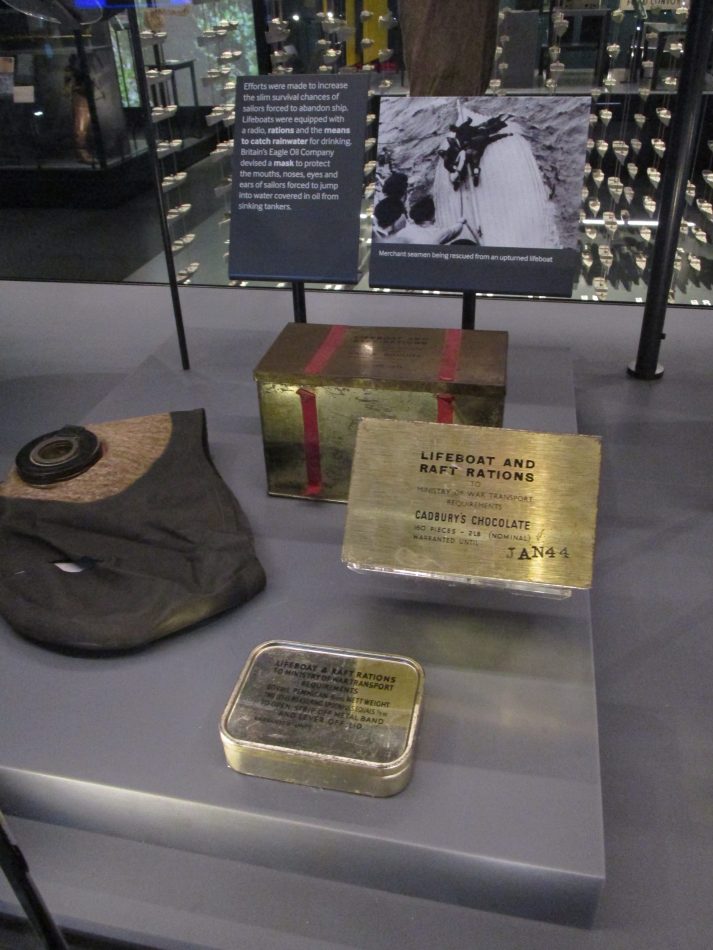
We now turn our attention to the Pacific. Note the headdress of some commonwealth armies.
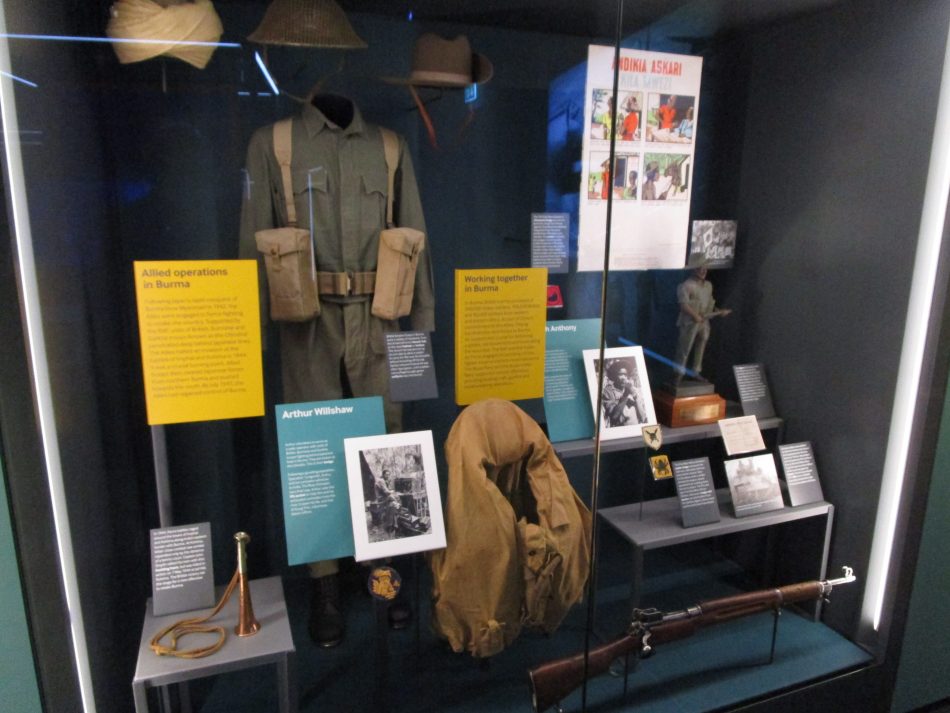
The US Marines were well represented in this part of the museum.
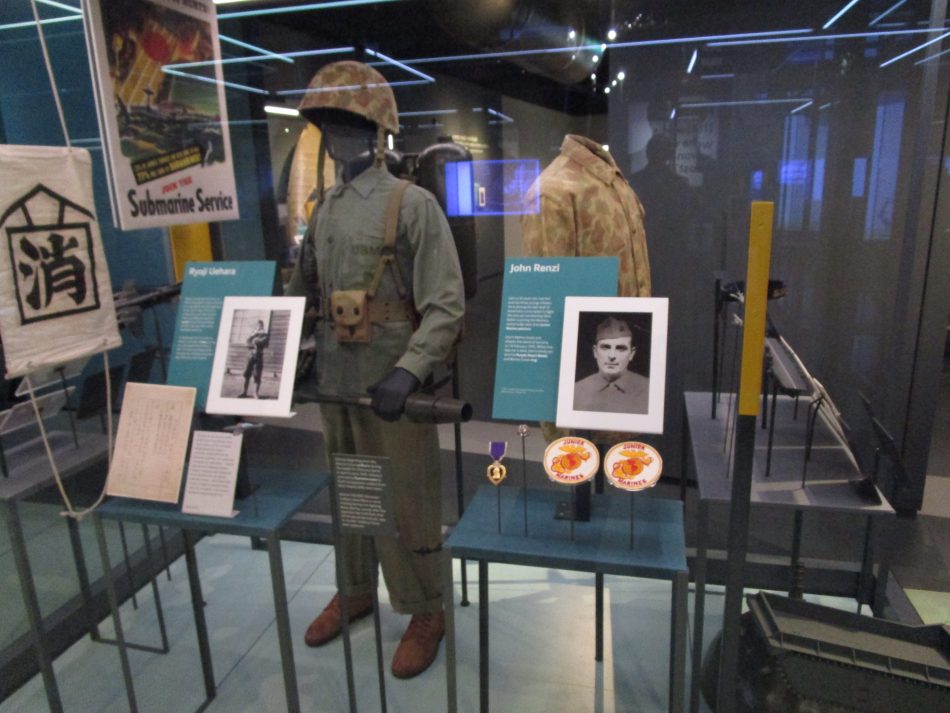
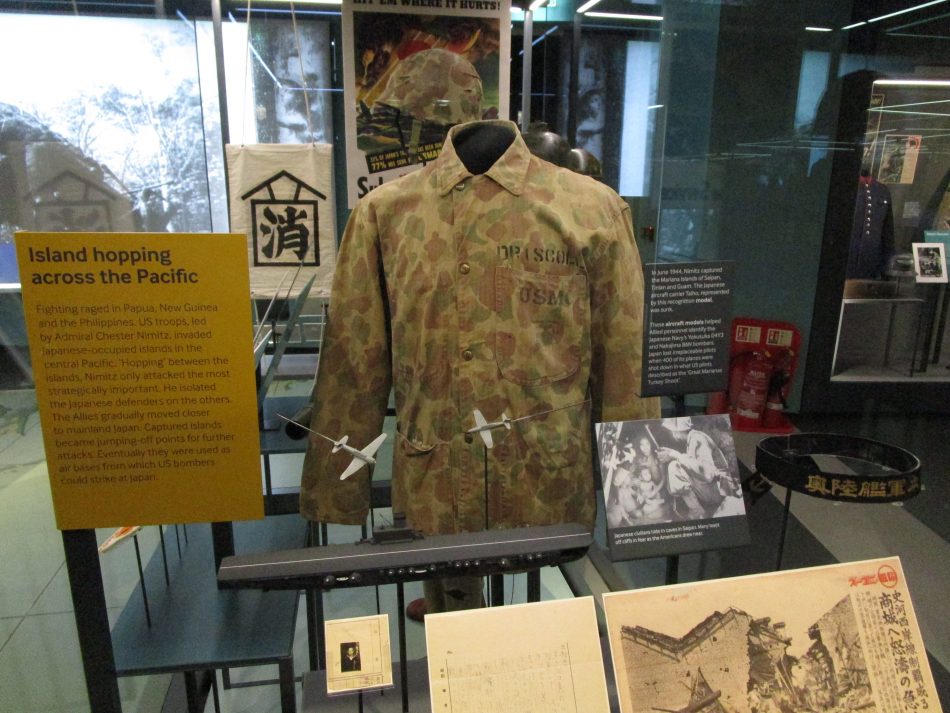
Here is a Japanese uniform and the remains of an airplane.
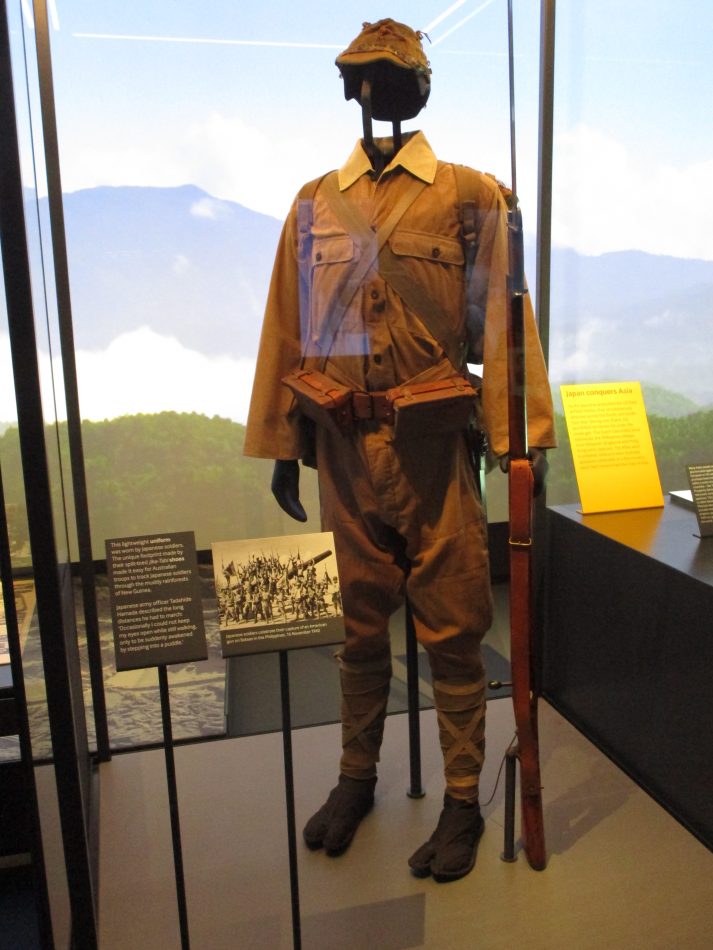
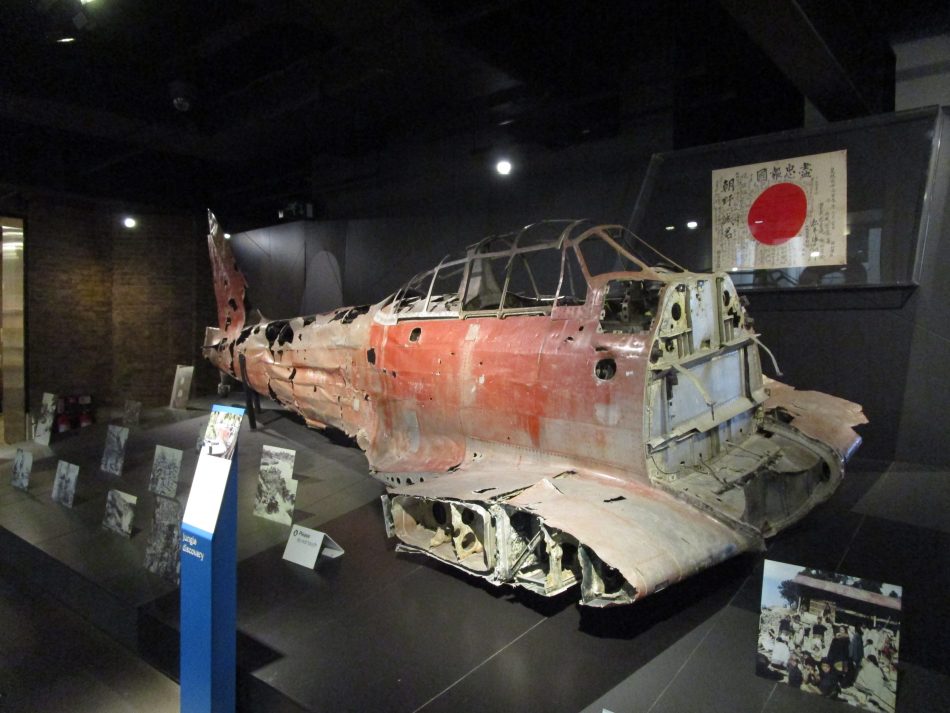
The famous Norden bomb sight.
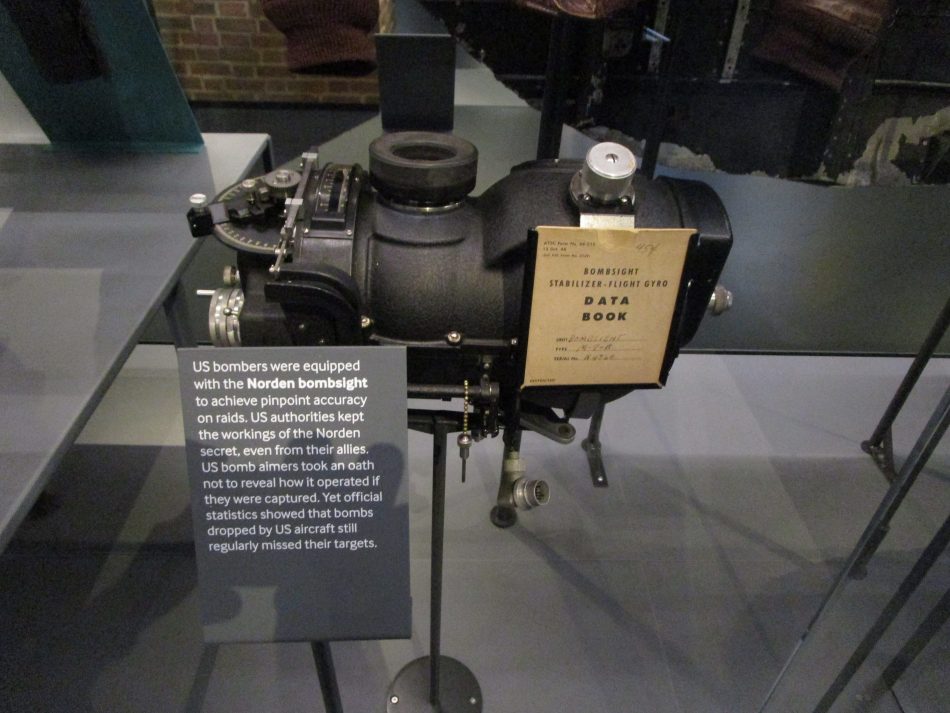
This is a home made flag that flew on a D-Day landing craft. This was the name the crew gave to their craft.
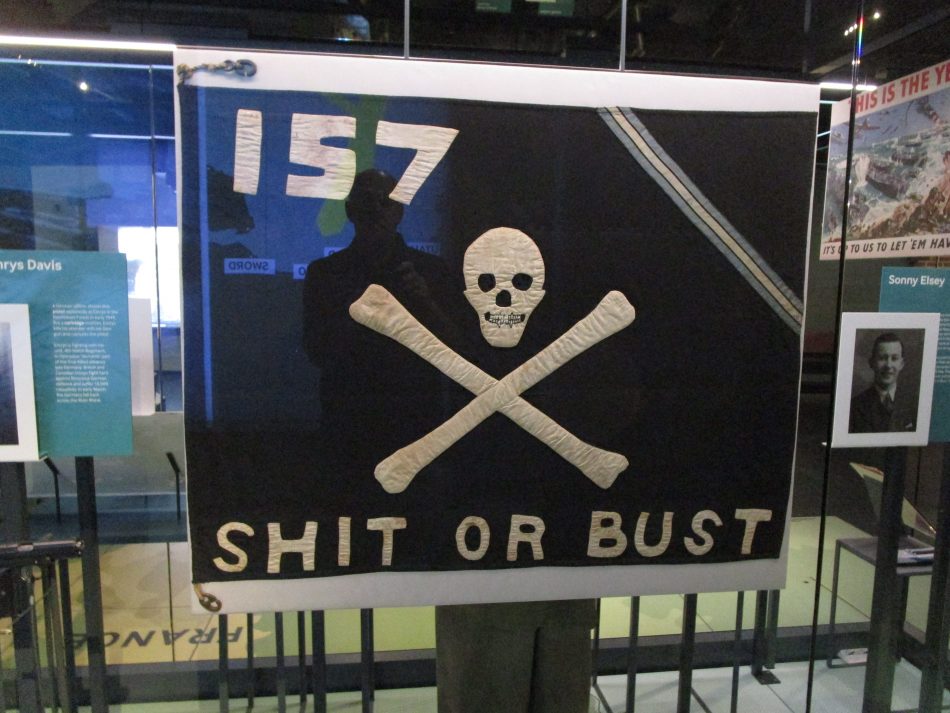
There were a number of these displays of various soldiers who served during the war from different countries. They were quite interesting to read.
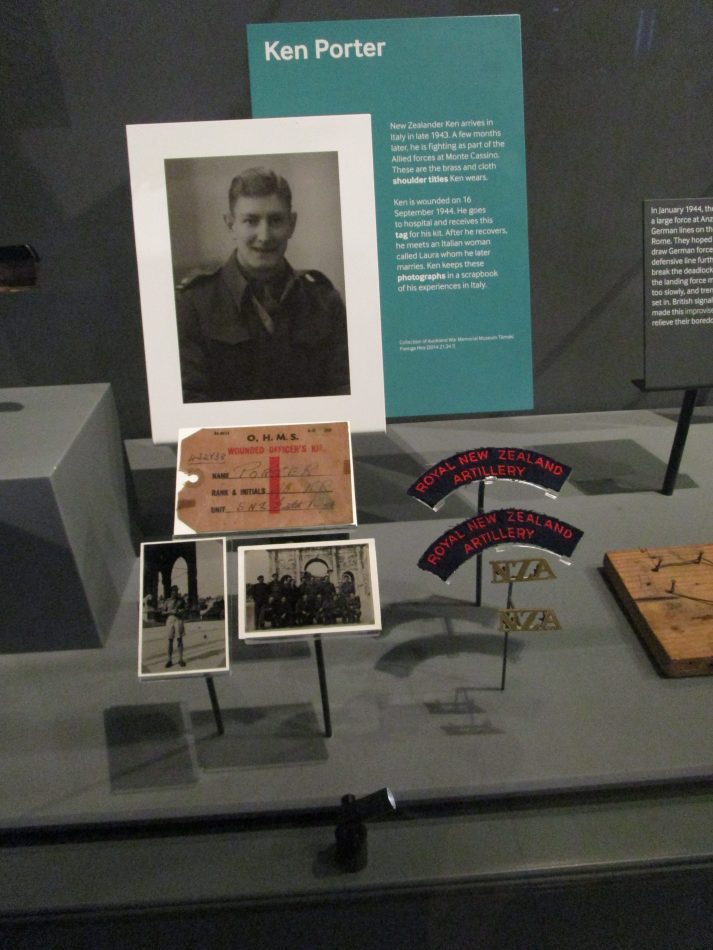
These are some vehicles that were on display in the atrium and entrance area.
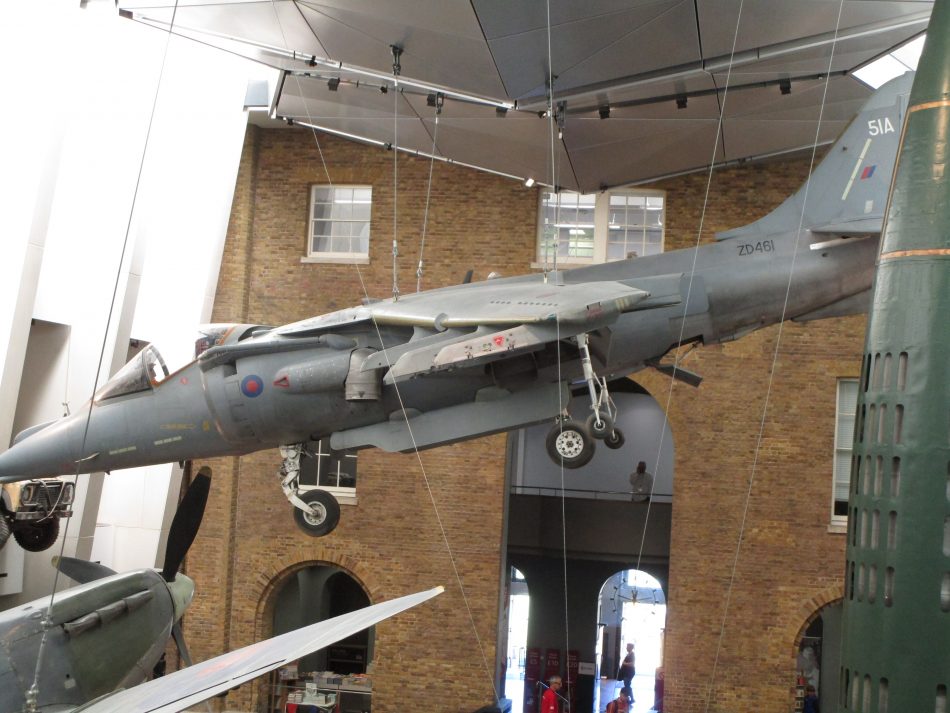
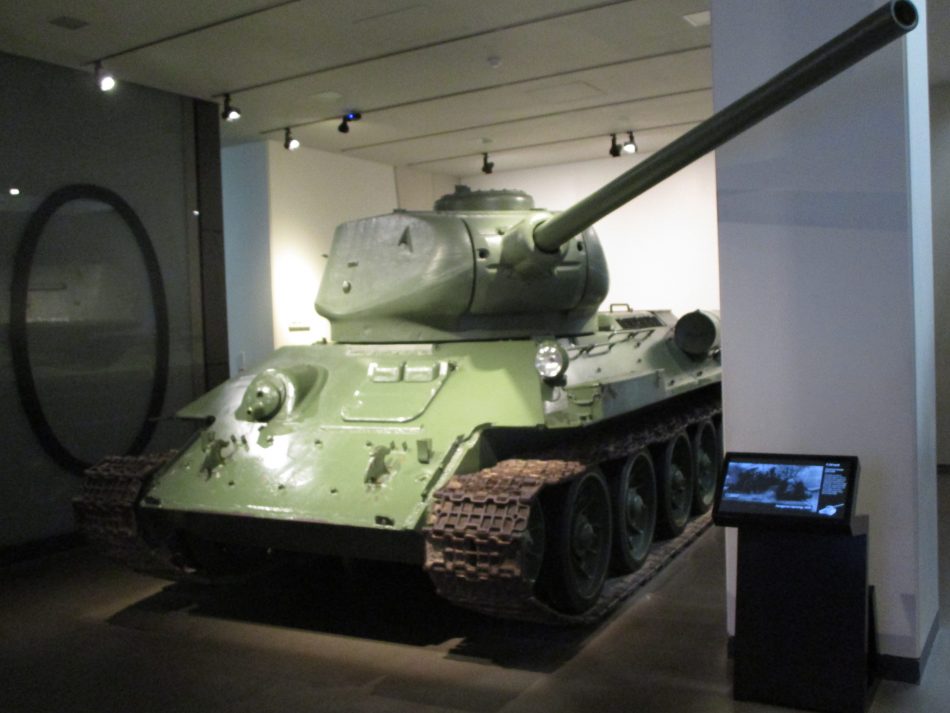
This vehicle was destroyed by a suicide bomb in Iraq in 2007.
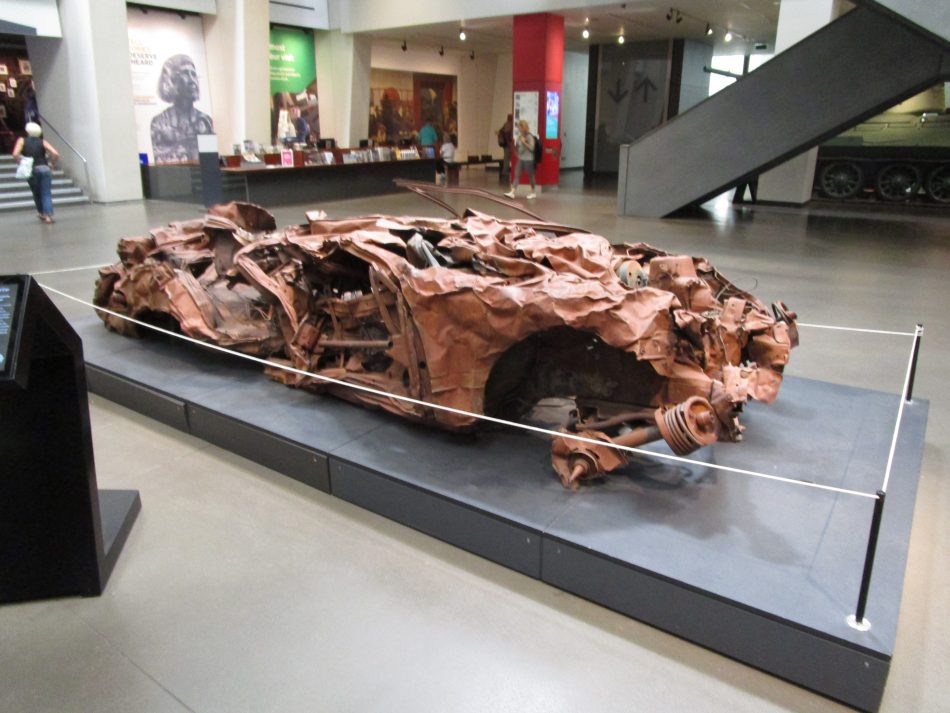
An armoured press vehicle.
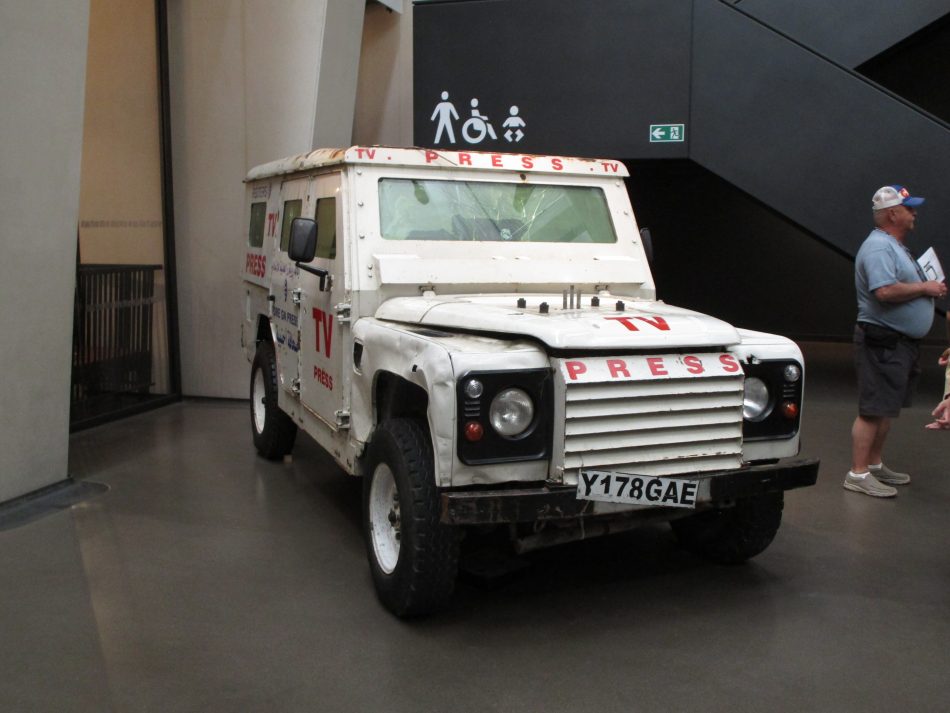
The famous 18 pounder gun and limber from World War 1. The King’s Troop, Royal Artillery still uses these guns for ceremonial duties.
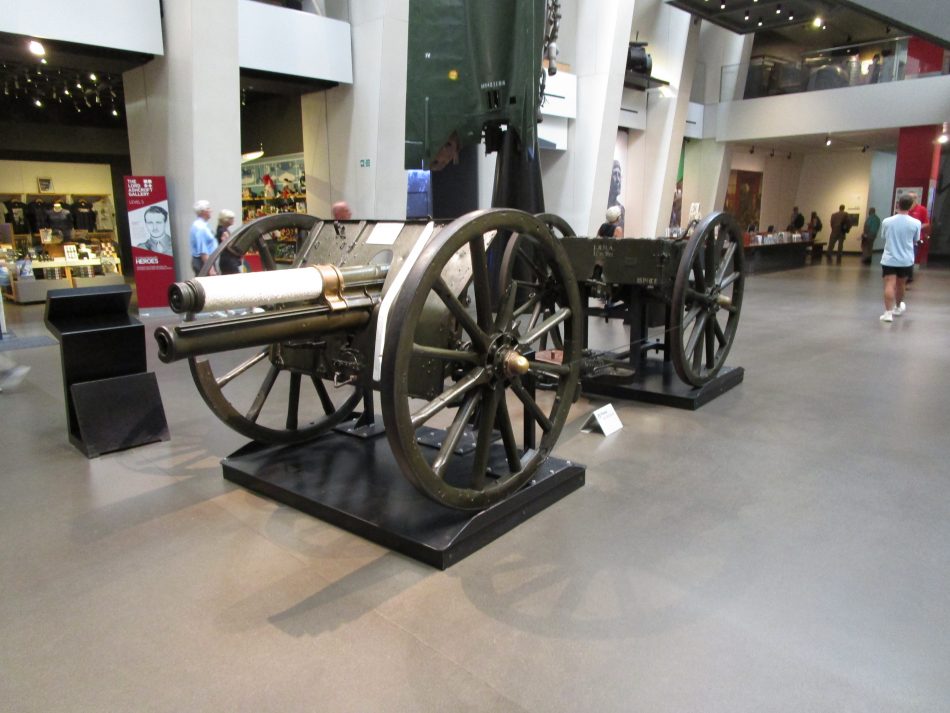
As I’ve mentioned before, the British are very good at hanging aircraft from the ceilings.
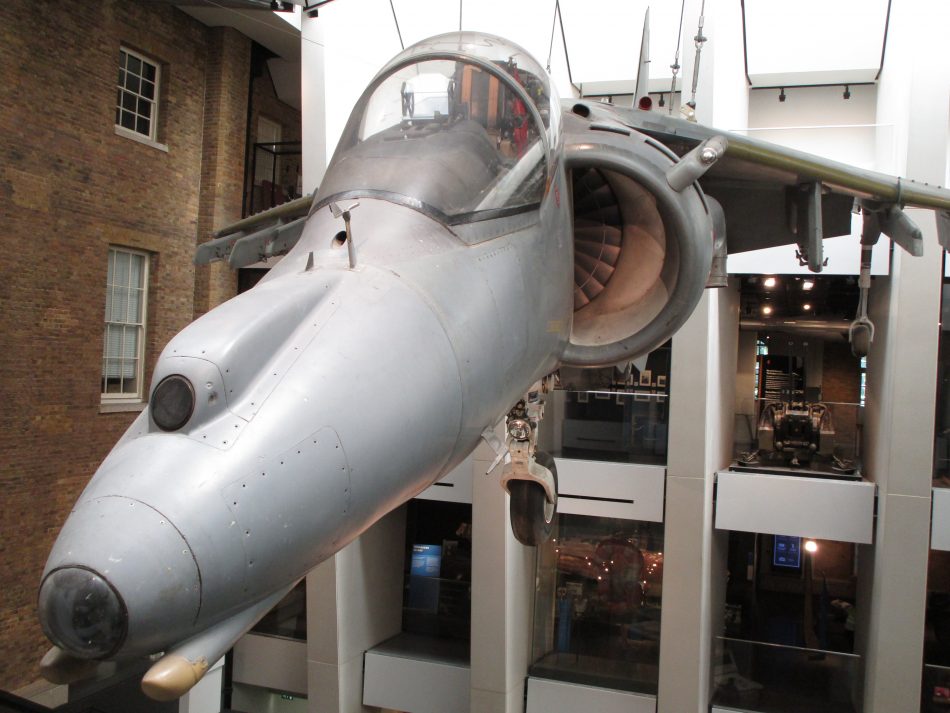
A Ferret scout car that had served on a UN mission.
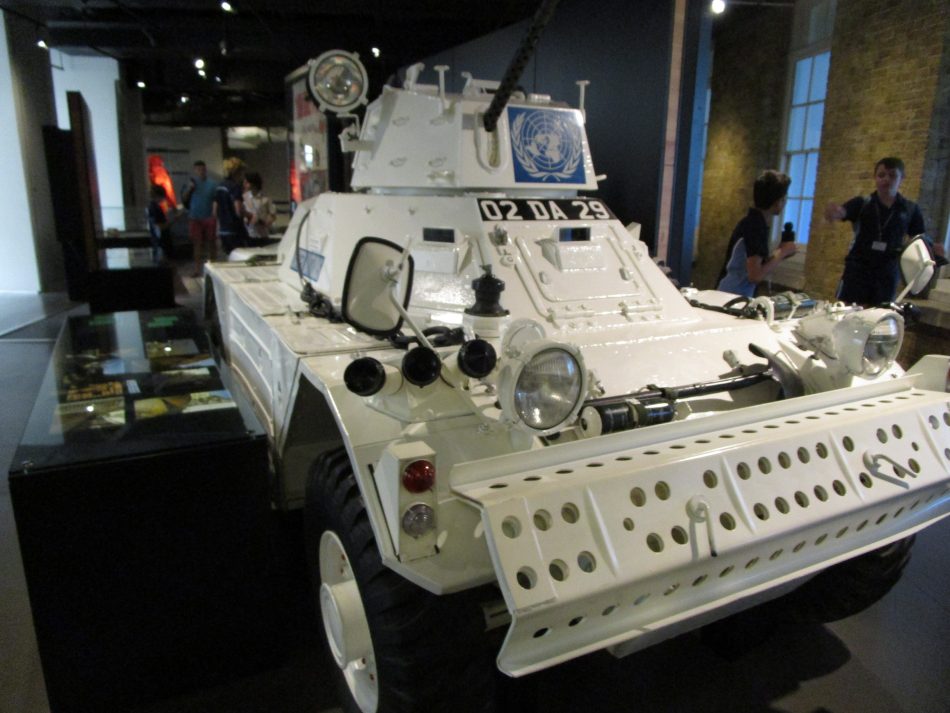
A more recent exhibit. That of the late Saddam Hussein.
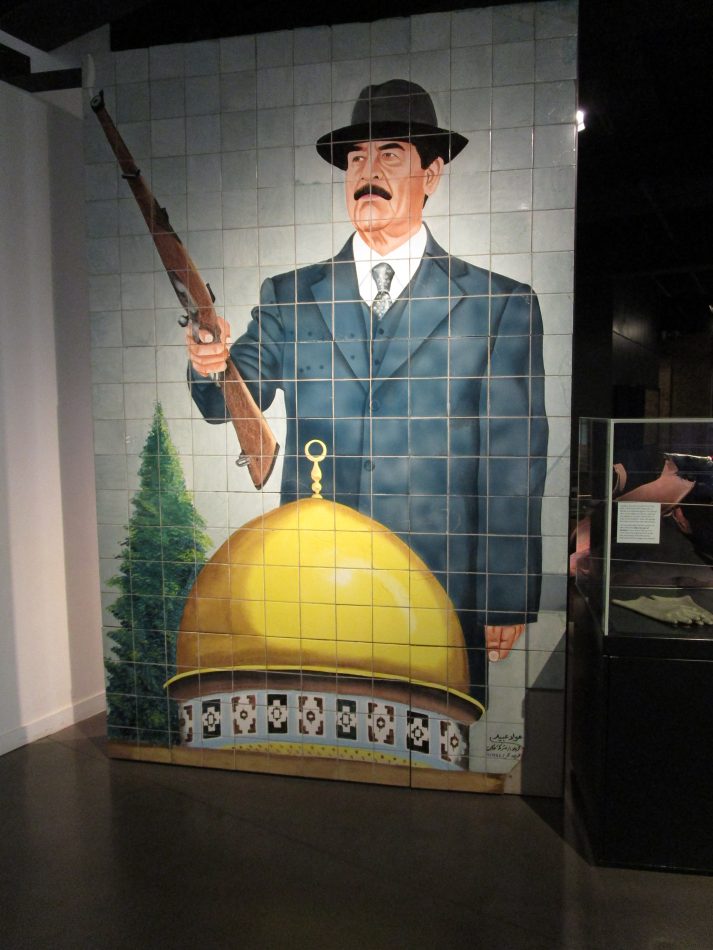
Unfortunately, I just missed this exhibit.

On the top floor was a gallery dedicated to personnel who received bravery medals. This Victoria Cross was awarded posthumously to Gordon Flowerdew, a British born Canadian officer with the Lord Strathcona’s Horse (Royal Canadians). He led a cavalry charge through German machine guns during the First World War at the battle of Moreuil Wood.
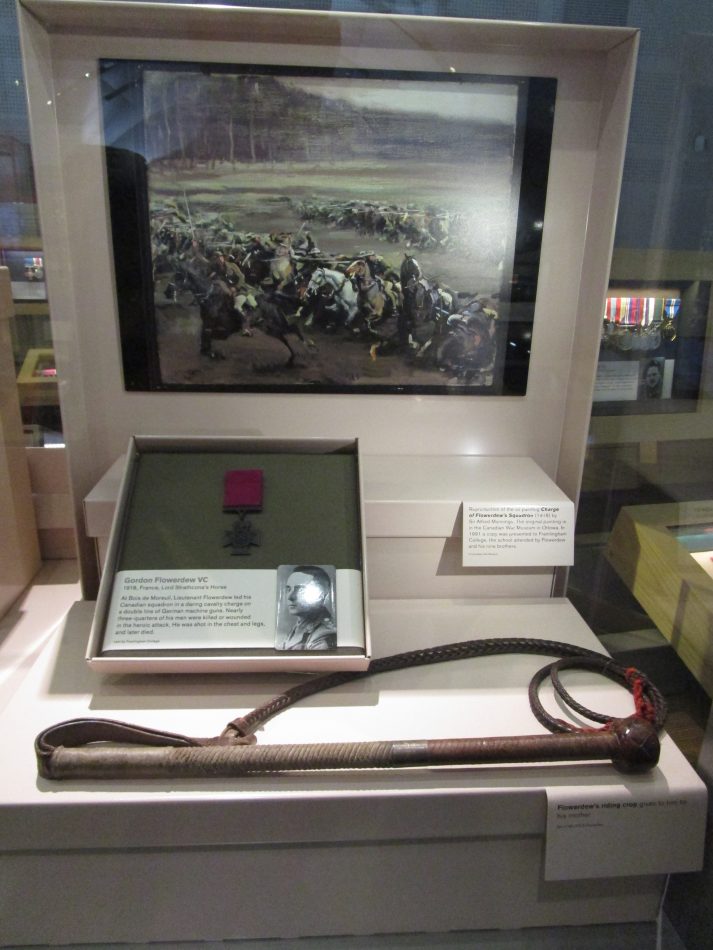
This Victoria Cross was awarded posthumously to Sgt Ian McKay who was killed during the Falklands War.
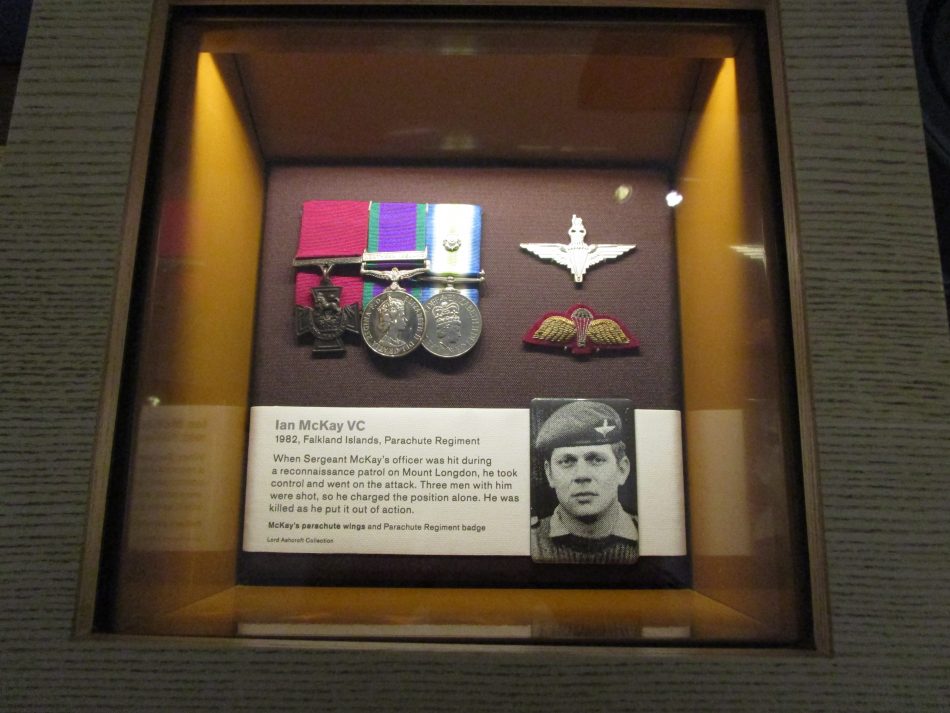
They had a very nice gift shop, but I was flying Ryanair back to Denmark and was travelling with just a carry on and a back pack.
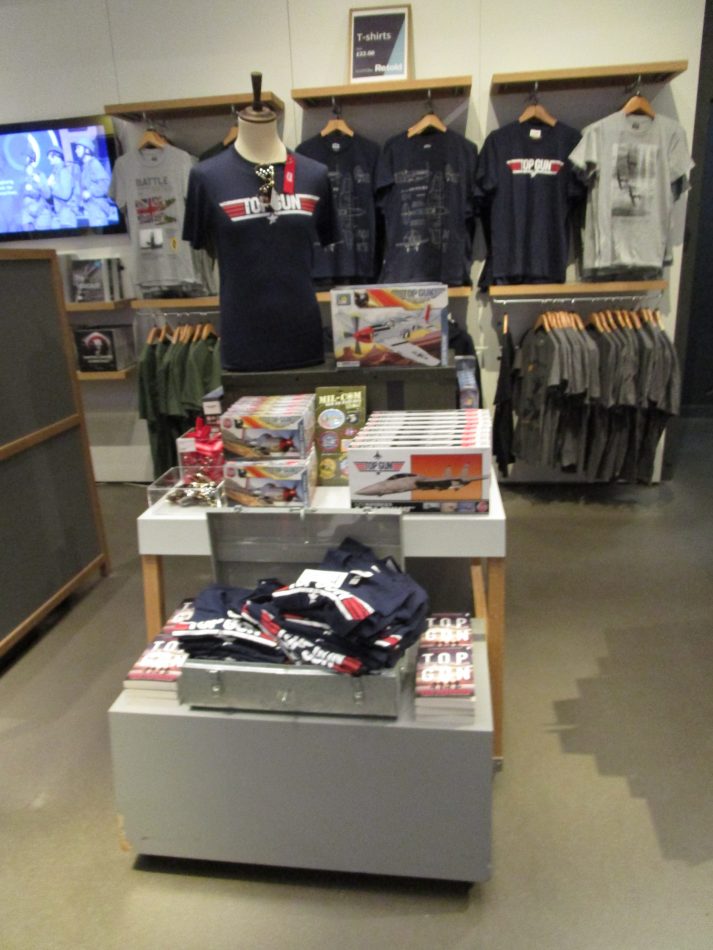
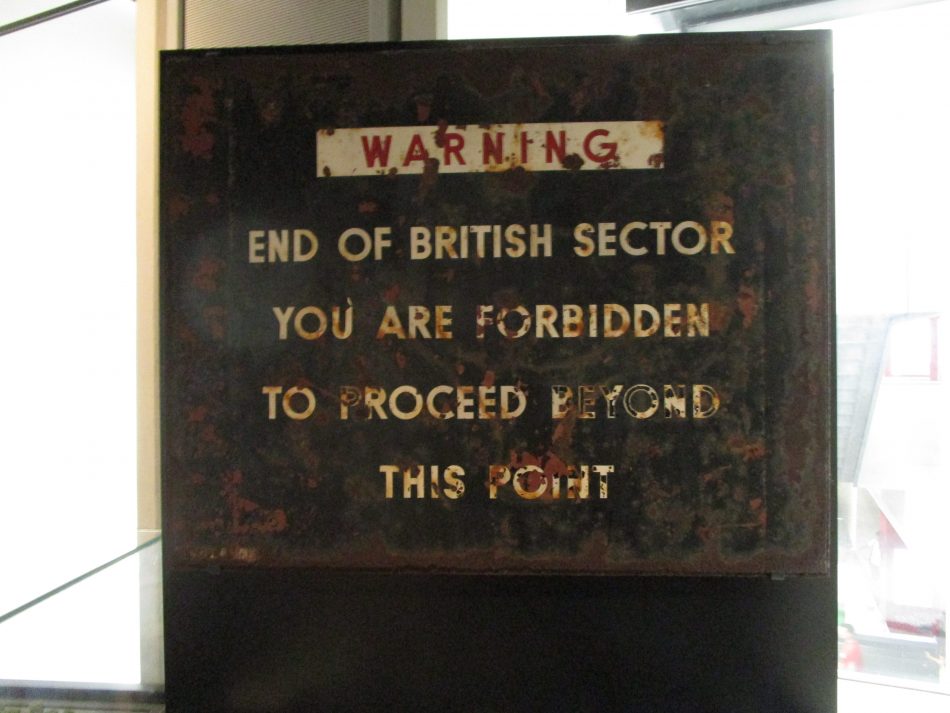
It goes without saying that this is a must see when you are in London. The price is right and it has something of interest for most anyone, be they have interest in the army, navy or air force.
Free Tours on Foot London just released a YouTube video on the museum. (15) Highlights of London’s Imperial War Museum | Virtual Tour – YouTube I highly recommend using Free Tours on Foot London. The tours aren’t really free, you just pay what you think the tour is worth. I took their “World War Two London” tour and it was excellent.
It was more accurately a tour of the Blitz, but excellent as well. The tour guide was part actor, part historian, part impressionist and part tour guide. He was a relatively young Irishman who lived on a houseboat and had one of those uniquely Irish names; Canice. Apparently he’s a classically trained actor. There were a number of children in our group and he made them feel as if they were his most important guests. These kind of tours, with the right kind of guide are much better than the more expensive tours. I even gave him a little extra, “for making fun out of the Americans”.
This concludes the museum reports from my recent grand tour of Europe. I’m off to Europe again shortly and will make sure I visit a few more military museums. I suspect that they will line up with the new Battlefront World War III Team Yankee Nordic Forces book.
